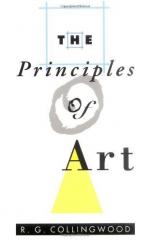|
This section contains 3,973 words (approx. 14 pages at 300 words per page) |

|
SOURCE: "Collingwood on Art and Fantasy," in Philosophy, Vol. LXIV, No. 250, October, 1989, pp. 547-56.
In the following essay, Lewis addresses the relationship between Collingwood's philosophy of art and concepts of psychoanalysis.
In Art and Its Objects, Richard Wollheim devotes considerable space to attacking a theory he calls the CroceCollingwood Theory of Art. According to this theory, as Wollheim presents it, an artist's capacity to create works of art consists in his being able to elaborate images or intuitions in his own mind, irrespective of whether there is any means of publicly externalizing them in the form of paintings, poems, symphonies, etc. Wollheim argues, I think rightly, that this conception of artistic creation is absurd. But it can also be argued that neither Croce nor Collingwood ever espouses this absurd theory. I will not develop that argument in this paper; instead, I want to draw attention to an aspect...
|
This section contains 3,973 words (approx. 14 pages at 300 words per page) |

|


